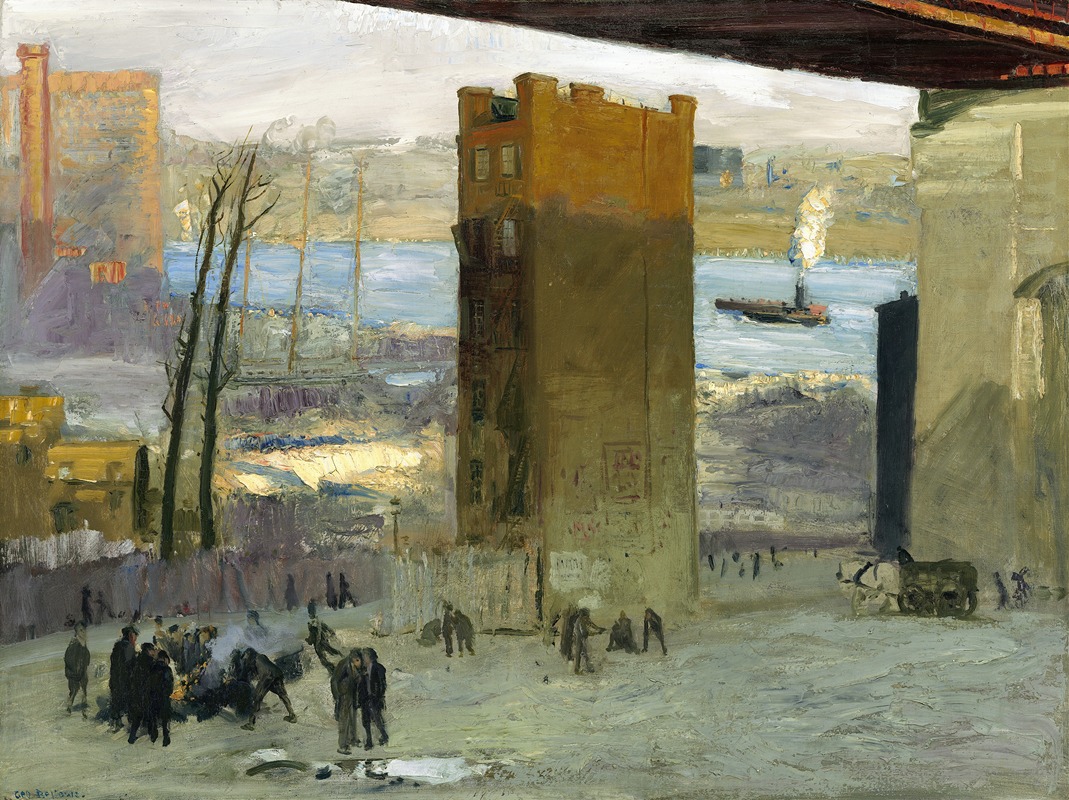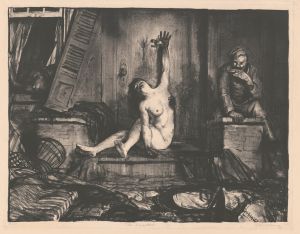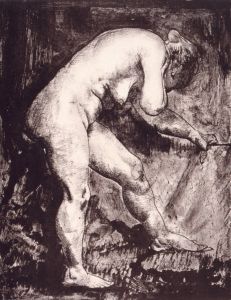
The Lone Tenement
A hand-painted replica of George Wesley Bellows’s masterpiece The Lone Tenement, meticulously crafted by professional artists to capture the true essence of the original. Each piece is created with museum-quality canvas and rare mineral pigments, carefully painted by experienced artists with delicate brushstrokes and rich, layered colors to perfectly recreate the texture of the original artwork. Unlike machine-printed reproductions, this hand-painted version brings the painting to life, infused with the artist’s emotions and skill in every stroke. Whether for personal collection or home decoration, it instantly elevates the artistic atmosphere of any space.
George Wesley Bellows, an influential American realist painter, created "The Lone Tenement" in 1909. This painting is a significant example of the Ashcan School, a movement known for its focus on depicting the everyday life of New York City, often highlighting the grittier aspects of urban existence. Bellows, who was a prominent figure in this movement, utilized his keen observational skills and dynamic brushwork to capture the essence of the city during the early 20th century.
"The Lone Tenement" portrays a solitary, dilapidated building amidst the bustling urban landscape of New York. The painting is notable for its dramatic use of light and shadow, which Bellows employed to emphasize the stark contrast between the tenement and its surroundings. The structure stands isolated, seemingly engulfed by the encroaching city, symbolizing the rapid urbanization and the socio-economic challenges faced by many during this period.
Bellows' work often reflected his interest in the social issues of his time, and "The Lone Tenement" is no exception. The painting can be seen as a commentary on the living conditions of the urban poor, highlighting the struggles of those who resided in such tenements. These buildings were typically overcrowded and poorly maintained, housing many immigrant families who had come to America in search of better opportunities. Through his art, Bellows shed light on the realities of urban life, prompting viewers to consider the human stories behind the facades of the cityscape.
The composition of "The Lone Tenement" is carefully constructed to draw the viewer's eye to the central building. Bellows uses a muted color palette, with earthy tones dominating the scene, which adds to the somber mood of the painting. The surrounding cityscape is depicted with loose, expressive brushstrokes, capturing the energy and chaos of urban life. In contrast, the tenement itself is rendered with more precision, standing as a solitary figure amidst the dynamic environment.
Bellows' ability to convey emotion and narrative through his work is evident in "The Lone Tenement." The painting not only serves as a visual document of a specific time and place but also invites reflection on broader themes of isolation, resilience, and change. It exemplifies Bellows' mastery in balancing realism with artistic expression, making it a compelling piece within his oeuvre.
Today, "The Lone Tenement" is held in the collection of the Museum of Fine Arts in Boston. It continues to be appreciated for its historical significance and artistic merit, offering insight into the urban experience of early 20th-century America. Bellows' work remains influential, and "The Lone Tenement" stands as a testament to his skill in capturing the complexities of city life with empathy and nuance.














